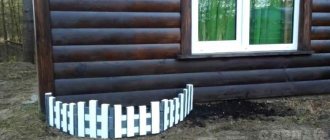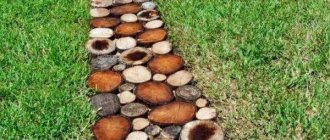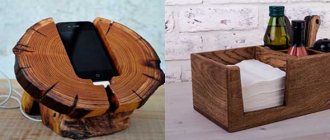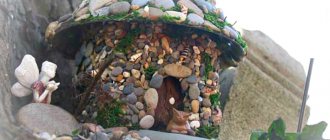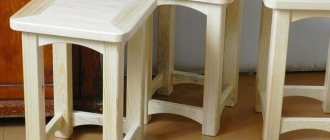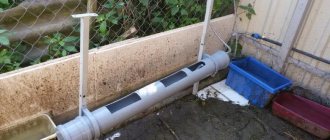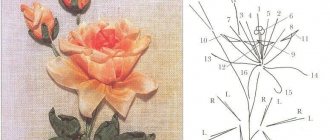The industry takes care of gardeners and gardeners and creates more and more new tools to help us. The only sad thing is that the price for them is not always affordable for farming enthusiasts. However, many work equipment can be made with your own hands.
To create the proposed tools you will need a minimum of materials and tools. Their sizes may vary, depending on your needs and preferences. Such devices will help when carrying out the most common garden work: sowing and loosening.
Rammer
If you want to get a good harvest (and this is the dream of all summer residents), you need to start with the correct sowing of seeds. The basis for good growth is a strong root system. Its health depends precisely on how you carried out the sowing. To ensure a strong root system, seeds must be sown on compacted soil. For this purpose, a tamper is useful, which you can easily make with your own hands.
In design, it resembles a regular wooden mop for washing floors. The only difference is in the lower part: for a mop this part is flat, but for a rammer it should be semicircular, resembling a rolling pin or handle cut lengthwise.
To work, you will need a wooden handle, a semicircular board for the bottom, 2 small parts for stops and several screws to connect the main elements.
Mark a row and compact the soil along its entire length with a hand-made tool, and then begin sowing.
Combination hoe
This tool is a hybrid of a weed removal fork and a classic hoe. A hoe consists of a straight steel blade, which can be either pointed or blunt. On the other side, there are several teeth. The handle of the tool is plastic or wooden. A combination hoe can be used to collect weeds in the area between rows and remove weeds by the roots, even if they are located close to each other. The tool is also suitable for leveling the soil, clearing the soil before planting various crops, creating furrows, loosening and hilling.
Single-row marker seeder
To speed up the sowing process, you can build a single-row marker. It is made from a small wooden block and wine corks, which are connected using self-tapping screws. The distance between the plugs depends on what crop you will use this seeder for. For beets or onion sets, screw the plugs at a distance of 10 cm from each other, for peas or carrots - at intervals of approximately 6 cm, etc.
On the prepared bed, mark the rows and go over them with a marker. Now all that remains is to water the resulting holes and place the seeds in them. Sowing time will be significantly reduced because you will not have to drill each hole separately.
Deadlines and ground rules
The area is cleared of weeds several times a season.
It is especially important to do this until the time when the vegetable crop has become so strong that it can defend its rights to full growth.
The first time weeding should be done approximately 15-20 after planting. Weeds grow much more actively than potatoes, so it is necessary to remove competitors and allow the vegetable sprouts to strengthen.
If the tubers were planted sprouted, then seedlings will appear quickly and during the first weeding, the potatoes will be easy to distinguish from other vegetation. In the case where the planting was done with unsprouted tubers, the emergence of vegetable sprouts will be late and weeding must be done very carefully.
The next weeding should be done before flowering begins. It can be combined with hilling. This will be in early July. It is necessary to thoroughly clear the area of weeds. Since in the future it will be difficult to use different mechanisms for weeding potatoes, and removing grass by hand is very difficult.
Hoe-ripper
Any gardener knows: there can never be too many hoes. We suggest you make a comfortable hoe-hoe with your own hands. To make it, you will need a small piece of board and nails 6-10 cm long (the depth of loosening the soil depends on the length of the nails).
Make a wooden handle of the size and shape that suits you. Sand it thoroughly with sandpaper to avoid splinters getting into your palm. Drive several nails around the perimeter of the thickened part at a distance of about 1.5 cm from each other.
To prevent the board from cracking when driving a nail, use a little trick from experienced craftsmen. Before you begin, use a hammer to flatten (i.e. flatten) the ends of all nails. In this case, when hammered, they will not split the wood fibers, but simply crush them - and cracks will not form.
Such a small hoe-hoe can help you out when weeding small flower beds or narrow row spacing in vegetable beds.
Other tools
In principle, you can get by with the list of equipment for the garden described above. However, complex operations can be simplified if you have additional useful equipment at hand.
- Flat cutter or Fokina hoe
An unusual device, which is designed mainly for loosening and removing weeds. In addition, it is used for many other operations, for example, forming furrows and hilling.
It looks like a curved plate with sharply sharpened edges. This is an easy tool that even an elderly person can handle, because its creator originally used it after a serious illness.
Working with a flat cutter requires certain skills, so you should first learn how to handle it. Contact your friends who already have it or watch a video on the Internet. For example, this:
- Miracle shovel
This is also an interesting and successful device, designed for digging soil and simultaneously loosening it. The structure consists of a frame and two forks, one of which is movable and the other is not. In the process, the movable ones stick into the soil and lift it towards the second forks, which break up the clods.
The work goes much faster and easier, while the load is removed from the lower back. In addition, the tool removes weeds without cutting off the roots, but by bringing them to the surface.
However, it should be borne in mind that the weight of such equipment exceeds the weight of an ordinary shovel. This type of equipment is not suitable for working with virgin, rocky, or clay soils. The forks may simply bend from the weight of the earth or stones.
When choosing a miracle shovel, special attention should be paid to the quality of the rods - they should be no thinner than 1 cm and quite durable. This is easy to check if you try to bend the forks with your hands: good ones won’t bend.
- Root remover
Its function is to quickly and accurately pull out the grass, while removing as much as possible the entire root system. This way, the fight against harmful shoots will be more effective, because there will be no new shoots from the root.
Root removers can be very different in design: in the shape of a trident, with a special lever, in the form of a corkscrew or a pin. They come in miniature ones with a short handle (hand-held), and with a long handle so that you don’t have to bend over.
- Gardening scissors
Needed if you plan to plant hedges or shrubs. With their help, overgrown shoots are trimmed and the bushes are given a beautiful shape.
If you want to get a perfectly smooth lawn, you will also have to use scissors to straighten it in hard-to-reach places.
There are special scissors for thinning: they are thin and elongated to penetrate deep into the branches.
- Hand cultivator
Similar to the technique described above. Of course, a manual soil ripper cannot be compared with its electric or gasoline counterpart in terms of speed or quality of loosening. However, if the area of soil being processed is small, then buying an expensive device does not make sense.
The tool looks like several rotating star disks with a knife for cutting roots.
Claw-shaped cultivators with one, three or more rods are common. Their loosening depth is small, and they are suitable for loosening the soil around garden crops, and not for digging.
- Scythe
The same story as with a cultivator: it is not always advisable to buy an expensive trimmer or lawn mower. In some cases, you can get by with a grandfather's braid. True, ownership requires skill and practice, but the result is a double benefit: both beauty is brought and health is strengthened.
There are several types of braids.
- Traditional - with a long handle and a point.
- Pink salmon - distinguished by a short handle and a blade curved like a sickle.
- A serpan is a short, slightly rounded point with a small handle.
Unusual weeding device
Pay attention to another device that can hardly be called a hoe, although it performs the same function - it removes weeds. To make such a device you will need wood for the handle and thick wire for the working part. For it, you can take, for example, nichrome wire with a diameter of 4 mm or any other durable material.
Cut a handle from a wooden blank. In its upper part, drill one through hole, equal in diameter to the wire. From the hole on both sides there should be 2 grooves measuring 2-3 mm, in which the working part will subsequently need to be slightly “recessed”.
Bend the frame from the wire using pliers. Insert it into the cut hole and clamp it in a vice. You can secure the frame in the handle by wrapping it with soft wire or a bandage soaked in PVA glue. When the glue dries, the tool is ready for use.
Special devices
The technology greatly facilitates work and performs difficult operations many times faster. On a large scale, it is advisable to spend money on a tool once, but then save a huge amount of effort and time.
- Saw - an electric device or chainsaw is especially good when you have to remove a thick branch or cut down an entire tree.
- Cultivator – if you plant a lot of plants, then a cultivator is absolutely necessary. Digging up a site by hand is too tedious. There are devices that run on electricity, batteries or gasoline.
- Lawn mower or trimmer - no matter how densely planted your area is, there will still be gaps between trees and paths. And there will be grass actively growing there, which will have to be mowed. This can be done with a hand scythe, but a trimmer or lawn mower will do the job better and faster.
This is not the entire list of possible units. There are others: shredders, sprayers, and so on. However, their cost is rather high, and their use is not always advisable.
Garden trowel
You can't do without a shovel in a dacha business. We suggest you make a small garden shovel, which will be very convenient, for example, to pick up soil when sowing seedlings or planting flowers in containers.
For work, prepare a galvanized pipe with a diameter of 3-5 cm (the size of the blade depends on your needs). Mark the middle on it. At this point, cut the pipe crosswise, cutting through about half. Now one of the parts needs to be cut lengthwise and the edges bent outward.
Draw the outline of the future shoulder blade on the bent part. Using tin scissors, cut them according to the design. Sand the blade well and wrap the handle with electrical tape. Now you can get to work.
Useful equipment
In addition to tools, you also need other gardening equipment, which you cannot do without in plant growing.
- Watering can
Designed for watering. It is better to choose a large container so that a lot of water can be placed in it at one time. At the same time, you shouldn’t overdo it either: it shouldn’t be very hard for you, otherwise it won’t take long to strain yourself.
It will be great if there is a spray nozzle installed at the end of the watering can. Thanks to it, the soil will not be washed away.
- Bucket
A couple of high-quality buckets are a must-have for any dacha farm. Draw water, bring sand and fertilizers, harvest crops - there will be a use for it. In gardening, containers with a volume of 10–12 liters are usually used.
Galvanized containers are strong, resistant to deformation and do not rust. But you should remember that you cannot carry earth and sand in it. Also, a thin layer is afraid of contact with alkali, acid, washing powder solution or salt.
Plastic buckets cannot withstand heavy loads and crack. But they do not react in any way to interaction with aggressive compounds and bulk substances.
- Hose with sprayer
If you have a water supply system: a central water supply or your own well, then you can organize watering from a hose. It's easier than wearing a watering can.
There are hose options that, when folded, have compact dimensions and take up almost no space. This is a suitable solution if you are forced to take the equipment to the barn or house after each watering.
For permanent outdoor storage, you should take a rubber sleeve.
- Wheelbarrow
To avoid having to carry buckets of sand or manure, it is advisable to purchase a comfortable wheelbarrow. You can transport seedlings, ripe fruits or garbage in it.
Pay special attention to the design. So, for areas with narrow paths, a wheelbarrow with one wheel is suitable. Inflatable wheels perform well on soft soils, and cast rubber is good for hard soil.
- Sprayer
It will help to spray chemicals against pests on the plants. Backpack sprayers are popular because they free up your hands and allow you to move freely.
Manual options work by activating a pump. Depending on the area of the site, it is necessary to select the appropriate container volume.
- Ropes and pegs
Useful for tying up plants and supporting heavy branches. They will also help you draw up a planting “plan” and outline the places where the beds and trees will be located.
Make sure you have markers to indicate which varieties you are planting and where.
- Covering material and arcs
In some regions, winters are very cold, and frosts are common in the spring, so to protect the seedlings from unpleasant weather, you have to cover them.
Non-woven polypropylene fiber or polyethylene film is best suited for these purposes.
If you live in places where summers are very hot, then a shading net will help protect your planting from the sun.
Arcs will be needed to lay down the protective sheet without damaging the plants.
- Gloves and shoes
To work in the beds, it is advisable to wear rubber shoes on your feet. It is easy to wash and does not allow moisture to pass through. In early spring or autumn, when there is mud all around, the best solution is rubber boots: they will keep your feet dry and protect your trousers from getting dirty. In the dry season, short galoshes are ideal.
In the garden, your hands suffer greatly: dirt and grass that are difficult to remove appear, calluses appear, and the skin dries out. Therefore, you need to protect your skin from negative effects and purchase several gloves for different occasions: latex, silicone, cotton, leather and others. They can be thin or thick depending on the functions performed.
When pruning thorny bushes, it is necessary to wear special gloves with elongated cuffs that will protect the wrists and forearms. In the cold season, choose insulated models.
- Knee pads
Weeding small weeds or sowing seeds requires painstaking individual work. Standing bent low is very uncomfortable. But standing on your knees, such work is less tiring. To keep your clothes clean and not get hurt by pebbles, it is better to use a backing.
Bedding is made of polyurethane foam or sewn from durable synthetic materials with padding. The main thing is that it is dense enough and does not allow the cold to pass through.
Knife for removing whiskers from strawberries or grapes
It is not always possible to easily trim the tendrils or young green stems of grapes or strawberries with an ordinary knife or pruning shears. A special knife is suitable for this purpose. Its steel blade has a pointed shape and resembles a leaf. An unusual detail is a hook-shaped recess made on one side of the blade. It is this place - from the inner surface of the blade - that is sharpened.
To trim an annoying mustache, take it in your left hand, and lightly run the sharp part along it with your right hand - the unnecessary shoot will be immediately removed.
These simple tools will help you make gardening and gardening more comfortable.
Is it worth making a cultivator attachment yourself?
The technology for caring for vegetation will also change: first, use a knife attachment to walk through the beds, cutting off the grass, and only then use a cultivator attachment.
Having decided to make your own cultivator attachment for the trimmer, you should first evaluate the following:
- The design of the output section of the boom: if it is a flexible shaft, then you will have to forget about the cultivator: it will not withstand the constantly changing amplitude of torques. The cardan transmission is more functional, and the most successful design is considered to be a multi-slotted rod, and a straight one, not a curved one.
- Drive power: If it is less than 1000W, the motor will overheat and the cultivation performance will drop sharply.
- Fuel tank volume: energy consumption will increase significantly, since the cultivator attachment will have to be made from scrap materials. Therefore, the tank must contain at least 1 liter of fuel.
- Handle design. Ergonomics experts believe that the most comfortable is the T-shaped handle, which provides the most accurate and reliable direction. The J-shaped handle common in some models makes it difficult to hold a gasoline trimmer with a cultivator attachment.
If the existing trimmer meets the listed requirements, and its owner has sufficient experience in performing such work, then it is quite possible to make a disk attachment with your own hands. As for gear-type nozzles, making them yourself is very labor-intensive and will not provide the desired quality.
The best models and their prices
When choosing trimmer attachments, first familiarize yourself with the manufacturers and design characteristics
Pay attention to value for money. Monitor reviews of the model you like
We'll tell you about the best models of attachments on the market.
KAAZ Kat-MC250P
Refers to cultivator attachments. Equipped with a subsoiler. Suitable for use in small areas.
Characteristics:
- manufacturer - Japan;
- brands: trimmer ECHO PAS-Tiller Cultivator, brush cutter PAS-265ES;
- price: 9990 rub.;
- knife material: hardened steel;
- Dimensions of the working body: width – 24 cm, depth – 36 cm.
KR400MP MAKITA 195710-3
Designed for small areas. The working part consists of cutters.
Characteristics:
- manufacturer - Japan;
- brands: EX2650LH, DUX60Z;
- price: 17160 rub.;
- knife material: metal;
- Dimensions of the working body: width – 16 cm, cutter diameter – 23.3 cm.
Milling type working body
Designed for weeding, which carefully digs up the soil, facilitating the penetration of moisture and nutrients and saturating it with oxygen.
Characteristics:
- manufacturer – Taiwan;
- brands: for TAC lawn mowers;
- price: 7900 rub.;
- knife material: steel;
- power supply: petrol engine;
- weight: 5 kg;
- Dimensions of the working body: width – 18 cm, cutter diameter – 20 cm.
